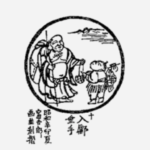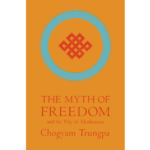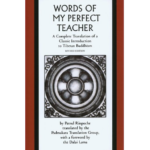
Madhyamakavatara: 8-Week Program Week 8 Pre-Reading
Summary
Date: 26 July
Topic: Applying the view: Post-Meditation & everyday life
Questions: How might we apply the view in post-meditation and in our everyday life (e.g. in relationships, at work, etc.)
Keywords: Middle Way, post-meditation, action, ethics
Also available: audio/video recordings and transcript/translations for Week 8.
Pre-Reading (Optional)
Introduction
Now that we have finished Chapter 6, we know that the bodhisattva, like the king of swans, relies on the two wings of wisdom and skilful means. However, as we have seen throughout the previous weeks, this is more easily said than done. The challenge of making sense of the Two Truths is at the heart of understanding both (a) how to think about ethics philosophically and theoretically, and (b) how to act in the world, in our post-meditation, which is our focus this week.
We can come at this in two ways: from the side of theory or from the side of practice. The readings this week offer both approaches:
- Theory:
- Cowherds (2015) Moonpaths
- Garfield (2015) “Ethics”, Chapter 9 from Engaging Buddhism
- Goodman (2017) “Ethics in Indian and Tibetan Buddhism”, Stanford Encyclopedia of Philosophy
- Practice:
- Bhikkhu Bodhi (1998) “Self-Transformation”
- Chögyam Trungpa Rinpoche (2011) Work, Sex, Money
- Chögyam Trungpa Rinpoche (1976) The Myth of Freedom
- Patrul Rinpoche (2010) The Words of My Perfect Teacher
There is also a fascinating article by Garfield et. al (2015) “Ego, Egoism and the Impact of Religion on Ethical Experience” in the Journal of Ethics, which examines how the view of emptiness relates to ethical attitudes in practice. As we note in the introduction and commentary below, the findings reported by Garfield and his colleagues further reinforce Rinpoche’s strong advice:
- Right view: We must ensure that our view is correctly established, and in order to do that we must refute all extremes, not just the extreme of existence. Only then will we have the view of the Middle Way beyond all dualistic extremes.
- Right practice: We must never divorce our view and our practice. In particular, we must never divorce the practice of emptiness from the practice of compassion and bodhicitta. Only then are we following in the footsteps of the bodhisattvas and practicing the Middle Way.
Otherwise, we may find that our practice could all too easily fall into the extremes of eternalism or – as this article finds – nihilism. This is a particular risk for the materialist/consumerist modern world, where the conventional post-Enlightenment view of secularism and rationality can easily be misunderstood as nihilism, even though secularism means nothing of the sort.
It is worth noting that some of readings this week come from authors that are controversial and can arouse strong reactions (Chögyam Trungpa Rinpoche, Werner Erhard). The readings here are offered for the teachings they contain, and they should not be taken as implying any personal judgement regarding the character or behaviour of their authors – either positive or negative. Nevertheless, given the controversy, it might be helpful to approach these pre-readings using the Four Reliances that we first encountered in Week 1:
Rely on the teaching, not on the person;
Rely on the meaning, not on the words;
Rely on the definitive meaning, not on the provisional;
Rely on your wisdom mind, not on your ordinary mind.
As Rinpoche says, as followers of the Middle Way we should never “divorce” the Two Truths. If you have received study and practice advice from your teacher, you will know what you need to do. But if not, you might follow Rinpoche’s advice to practice going against your habits (as we discussed in Week 7). If you usually lean towards theory, you might consider reading about the approach based on practice, and vice versa. As Book X of the Avatamsaka Sutra points out:
Of the past, present
And future guides,
None expounds just one method
To become enlightened.
Buddhas know beings’ minds;
Their natures each different;
According to what they need to be freed,
Thus do the Buddhas teach.
To the stingy they praise giving,
To the immoral they praise ethics;
To the angry they praise tolerance,
To the lazy they praise effort.
To those with scattered minds they praise meditative concentration,
To the ignorant, they praise wisdom;
To the inhuman, they praise kindness and sympathy,
To the malicious, compassion.
To the troubled they praise joy,
To the devious they praise equanimity.
Thus practicing step-by-step,
One gradually fulfils all Buddha teachings.
[Cleary (1993) The Flower Ornament Scripture, pp. 307–308]

Bhikkhu Bodhi (1998) ➜”Self-Transformation”, Access To Insight
Bhikkhu Bodhi explains how the Dharma path involves both ‘self-transcendence’ (i.e. cultivation of wisdom) and ‘self-transformation’ (i.e. cultivation of skilful means):
Self-transformation is also a fundamental goal of the Buddha’s teaching, an essential part of his program for liberation from suffering. The Dhamma was never intended for those who are already perfect saints. It is addressed to fallible human beings beset with all the shortcomings typical of unpolished human nature: conduct that is fickle and impulsive, minds that are tainted by greed, anger and selfishness, views that are distorted and habits that lead to harm for oneself and others. The purpose of the teaching is to transform such people — ourselves — into “accomplished ones”: into those whose every action is pure, whose minds are calm and composed, whose wisdom has fathomed the deepest truths and whose conduct is always marked by a compassionate concern for others and for the welfare of the world.
Between these two poles of the teaching — the flawed and knotted personality that we bring with us as raw material into the training, and the fully liberated personality that emerges in the end — there lies a gradual process of self-transformation governed by highly specific guidelines. This transformation is effected by the twin aspects of the path: abandoning (pahana), the removal from the mind of all that is harmful and unwholesome, and development (bhavana), the cultivation of qualities that are wholesome, pure and purifying.
What distinguishes the Buddha’s program for self-transformation from the multitude of other systems proposing a similar end is the contribution made by another principle with which it is invariably conjoined. This is the principle of self-transcendence, the endeavor to relinquish all attempts to establish a sense of solid personal identity. In the Buddhist training the aim of transforming the personality must be complemented by a parallel effort to overcome all identification with the elements that constitute our phenomenal being. The teaching of anatta or not-self is not so much a philosophical thesis calling for intellectual assent as a prescription for self-transcendence. It maintains that our ongoing attempt to establish a sense of identity by taking our personalities to be “I” and “mine” is in actuality a project born out of clinging, a project that at the same time lies at the root of our suffering. If, therefore, we seek to be free from suffering, we cannot stop with the transformation of the personality into some sublime and elevated mode as the final goal. What is needed, rather, is a transformation that brings about the removal of clinging, and with it, the removal of all tendencies to self-affirmation.

Chögyam Trungpa Rinpoche (2011) Work, Sex, Money: Real Life on the Path of Mindfulness
As the Japanese proverb says:
Vision without action is a daydream. Action with without vision is a nightmare.
As we have seen throughout our exploration of the Middle Way teachings, developing the right view is essential if our attempts to “help” the world aren’t simply going to make things worse. The same sentiment is expressed here in the editor’s preface:
The world needs our help. But in order to help, we need to unlock and harness the spiritual wakefulness and inner resources we all possess.
Unlocking our “spiritual wakefulness and inner resources” is the path of practice. And as Trungpa Rinpoche points out, our practice isn’t just a question of what happens on our meditation cushion but about how we work in the world. It’s about “meditation in action”:
I regard myself as an ordinary person. I am a householder, who makes mortgage payments. I have a wife and three children whom I support. At the same time, my relationship with the teachings is inseparable from my whole being. I do not try to rise above the world. My vocation is working with the world. … There is a fundamental idea which refuses to divide things into this or that, sacred or profane, right or wrong. That is why I write and speak of meditation in action. It is much easier to appear holy than to be sane. So the idea is to separate spirituality from spiritual materialism. This requires a practice and some courage.
[From press release]: Each day we deal with the challenges of ordinary life: a series of mundane experiences that could be summarized by the title of this book, Work, Sex, Money. We all hope that these aspects of our life will be a source of fulfillment and pleasure, and they often are. Yet they are also always sources of problems for which we seek practical advice and solutions. The best prescription, according to Chögyam Trungpa, is a dose of reality and also a dose of respect for ourselves and our world. His profound teachings on work, sex, and money celebrate the sacredness of life and our ability to cope with its twists and turns with dignity, humour, and even joy.
He begins by breaking down the barrier between the spiritual and the mundane, showing that work, sex, and money are just as much a part of our spiritual life as they are a part of our everyday existence. He then discusses these subjects in relation to ego and self-image, karma, mindfulness, and meditation. “Work” includes general principles of mindfulness and awareness in how we conduct everyday life as well as discussion of ethics in business and the workplace. “Sex” is about relationships and communication as a whole. “Money” looks at how we view the economics of livelihood and money as “green energy” that affects our lives. The result is an inclusive vision of life, one that encompasses the biggest issues and the smallest details of every day.
There are, in fact, few definitive answers in these pages. There is, however, authentic wisdom providing us with tools we need to work with the toughest stuff in our lives.
Purchase: ➜Amazon

Chögyam Trungpa Rinpoche (1976) The Myth of Freedom
Dzongsar Khyentse Rinpoche has said that many of Trungpa Rinpoche’s teachings are terma – revealed treasures. The Myth of Freedom is filled with remarkably fresh re-interpretations of the Buddha’s core teachings that are both immediately relevant to the contemporary world while also embodying the non-dual wisdom of mahamudra. For example, in discussion ‘right intention’ (the 2nd of the 8 aspects of the Noble Eightfold Path), Trungpa Rinpoche says (pp. 94-95):
According to Buddha there is also “right intention.” In order to see what this is, we first must understand what Buddha meant by “right.” He did not mean to say right as opposed to wrong at all. He said “right” meaning “what is,” being right without a concept of what is right. “Right” translates the Sanskrit samyak, which means “complete.” Completeness needs no relative help, no support through comparison; it is self-sufficient. Samyak means seeing life as it is without crutches, straightforwardly. In a bar one says, “I would like a straight drink.” Not diluted with club soda or water; you just have it straight. That is samyak. No dilutions, no concoctions – just a straight drink. Buddha realized that life could be potent and delicious, positive and creative, and he realized that you do not need any concoctions with which to mix it. Life is a straight drink – hot pleasure, hot pain, straightforward, one hundred percent. So right intention means not being inclined toward anything other than what is. You are not involved in the idea that life could be beautiful or could be painful, and you are not being careful about life. According to Buddha, life is pain, life is pleasure. That is the samyak quality of it – so precise and direct: straight life without any concoctions. There is no need at all to reduce life situations or intensify them. Pleasure as it is, pain as it is – these are the absolute qualities of Buddha’s approach to intention.
[From press release]: Freedom is generally thought of as the ability to achieve goals and satisfy desires. But what are the sources of these goals and desires? If they arise from ignorance, habitual patterns, and negative emotions, is the freedom to pursue these goals true freedom—or is it just a myth?
In this book, Chögyam Trungpa explores the meaning of freedom in the profound context of Tibetan Buddhism. He shows how our attitudes, preconceptions, and even our spiritual practices can become chains that bind us to repetitive patterns of frustration and despair. He also explains how meditation can bring into focus the causes of frustration, and how these negative forces can aid us in advancing toward true freedom.
Trungpa’s unique ability to express the essence of Buddhist teachings in the language and imagery of contemporary American culture makes this book one of the best sources of the Buddhist doctrine ever written.
Purchase: ➜Amazon

Cowherds, The (2015) Moonpaths: Ethics and Emptiness
The Cowherds is a collective of leading contemporary Buddhist scholars that are re-examining the Madhyamaka teachings in the light of contemporary Western philosophy. Their first book was Moonshadows (2010). Describing these two books, they write:
Just as that volume was our collective attempt to understand what it is to take truth seriously in the context of the Madhyamaka doctrine of emptiness, this volume is our collective attempt to understand how to take ethics seriously in that metaphysical context.
[From press release]: The Mahayana tradition in Buddhist philosophy is defined by its ethical orientation – the adoption of bodhicitta, the aspiration to attain awakening for the benefit of all sentient beings. And indeed, this tradition is known for its literature on ethics, which reflect the Madhyamaka tradition of philosophy, and emphasizes both the imperative to cultivate an attitude of universal care (karuna) grounded in the realization of emptiness, impermanence, independence, and the absence of any self in persons or other phenomena. This position is morally very attractive, but raises an important problem: if all phenomena, including persons and actions, are only conventionally real, can moral injunctions or principles be binding, or does the conventional status of the reality we inhabit condemn us to an ethical relativism or nihilism? In Moonpaths, the Cowherds address an analogous problem in the domain of epistemology and argues that the Madhyamaka tradition has the resources to develop a robust account of truth and knowledge within the context of conventional reality. The essays explore a variety of ways in which to understand important Buddhist texts on ethics and Mahayana moral theory so as to make sense of the genuine force of morality.
Purchase: ➜Amazon

Erhard, Werner (1973) ➜Life, Living and Winning the Game
This article offers a classic articulation of Erhard’s philosophy, which he systematized as EST (Erhard Seminars Training) and subsequently in the programs of Landmark Education. Drawing extensively on 20th century philosophy and systems thinking, Erhard was a close friend of Alan Watts, the noted Western interpreter of Zen Buddhism, and he also studied with Zen roshi Yamada Mumon and HH the 16th Karmapa. He was at the heart of psychology, self-help and personal transformation movements in 1970s California, and his thinking has decisively shaped contemporary Western approaches to personal development. A 2012 Financial Times article stated that Erhard’s influence “extends far beyond the couple of million people who have done his courses; there is hardly a self-help book or a management training programme that does not borrow some of his principles.”
For our purposes, his work offers a fascinating re-working of Buddhist concepts such as the Two Truths, and more importantly he offers an articulation of how emptiness and non-duality might be practiced and applied in everyday life, in a completely secular context. Although he does not claim to be teaching Buddhism, he acknowledges his debt to the Dharma:
Of all the disciplines that I studied, practiced, learned, Zen was the essential one.
Werner Erhard and his followers are by no means without controversy, and the methods of EST were considered by some to be abusive. Nevertheless, his work has helped created the context within which much of the contemporary Western world of ‘self-help’ has evolved – including many of the current (mis)interpretations of Dharma in the West. If you are interested in understanding this context for “Western Buddhism” in terms of how people engage in practice – rather than in terms of Western philosophy – it is essential to understand Erhard.
The resonances are immediately evident even in the opening of the article:
Living is really pretty simple. Living happens right now; it doesn’t happen back then, and it doesn’t happen out there. Living is not the story of your life. Living is the process of experiencing right now.
Thinking about right now, figuring it out, perceiving it, arguing, reading about or believing anything about right now – none of these produce any certainty about living.
When you get beyond the symbols and beliefs about now, beyond thinking about it, beyond efforting or working at it, when you get even beyond merely feeling it, when you get all the way up to observing it, being with it, and finally up to totally experiencing it, the uncertainty about living goes away, because you know the truth in the only way in which a being ever knows the truth – by direct experience.
Actually, it is possible to open up the space for people to transcend life, to transcend these things that get in the way of being here now, so that they can experience being here now for themselves.
Let’s take a look at the nature of now. What I’ve noticed with the people I’ve interacted with is that everyone who truly experiences right here, right now, actually sees that it’s all perfect exactly the way it is. When I am being myself, nothing more and nothing less – when I am doing exactly what I am doing – when I am allowing what is so around me to be exactly like it is – when I am being right here instead of where I am going – when I am observing it all just as it is without adding any judgments or evaluations or comparing it, then I observe that it is perfect. (For right now, – not that it should stay that way.) A thing is perfect when it is the way it is – when it is itself. To take away or add to that would produce a flaw. Therefore it is all perfect because, in terms of experiencing, that is to say, living, what is so right now is what is so right now. Truly, that is the whole realization. There is nothing startling about that. What is, is and what isn’t, isn’t. So what! – That’s precisely what people say when they find out. Enthusiastically – So What! There’s an enormous freedom in experiencing that. When you can really observe and experience that, it transforms your ability to experience living.
The ball game might seem to be over at that point because you now would know the truth – what is, is and what is not – is not. You could just sit there and dig the experience of it and let it be the way it is and it is perfect. The problem is you’ve only handled the truth – you still have the lie to handle.
Actually, not very many of us are paying attention to living and therefore we don’t get very much out of it. There’s something else besides living, the thing most of us have our attention on. And that’s the thing called life – the drama, the story, the illusion, the lie.

Garfield, Jay (2015) “Ethics”, Chapter 9 in ➜Engaging Buddhism [PDF, free download of complete book]
Garfield presents a lovely overview of Buddhist ethics – beginning with the articulation of the Four Noble Truths at Sarnath and running through the work of Nagarjuna in his Ratnavali, Candrakirti in Madhyamakavatara, and Shantideva in Bodhicaryavatara. He also compares and contrasts Buddhist approaches to morality and ethics with those of Western philosophy. In the opening of the chapter, he cautions against simplistic attempts to understand Buddhist ethics (which are founded in a view of non-self and dependent arising) in the familiar terms of Western ethics (which are founded in a view of self):
There are two temptations to be resisted when approaching Buddhist moral theory. The first is to assimilate Buddhist ethics to some system of Western ethics, usually either some form of Utilitarianism or virtue ethics. The second is to portray Buddhist ethical thought as constituting some grand system resembling those that populate Western metaethics. The first temptation, of course, can be avoided simply by avoiding the second. In Buddhist philosophical and religious literature we find many texts that address moral topics, and a great deal of attention devoted to accounts of virtuous and vicious actions, states of character and lives. However, we find very little direct attention to the articulation of sets of principles that determine which actions, states of character or motives are virtuous or vicious, and no articulation of sets of obligations or rights.
Buddhist moral theory provides an alternative voice in those in contemporary debates, and a different view of the subject matter of ethics. Buddhist moral theorists see ethics as concerned not primarily with actions, their consequences, obligations, sentiments or human happiness, but rather with the nature of our experience. That is, as we will see, Buddhist ethics is a moral phenomenology concerned with the transformation of our experience of the world, and hence our overall comportment to it.
This is not because Buddhist moral theorists were and are not sufficiently sophisticated to think about moral principles or about the structure of ethical life, and certainly not because Buddhist theorists think that ethics is not important enough to do systematically. It is instead because from a Buddhist perspective there are simply too many dimensions of moral life and moral assessment to admit a clean moral theory. Buddhist ethical thought has instead been concerned with understanding how the actions of sentient beings are located and locate those beings within the web of dependent origination, or pratiya-samutpada. This web is complex, and there is a lot to be said. And so Buddhists have had a lot to say. But the web is also untidy, and so what Buddhists have had to say resists easy systematization.
Garfield emphasizes that a Buddhist understanding of ethical behaviour is inescapably narrative rather than metaphysical, since there is no truly existing self:
What is it to act, in a way relevant to moral assessment or reaction? It is for our behaviour to be determined by reasons, by motives we and/or others, regard as our own. It is therefore for the causes of our behaviour to be part of the narrative that makes sense of our lives, as opposed to being simply part of the vast uninterpreted milieu in which our lives are led, or bits of the narratives that more properly constitute the lives of others. This distinction is not a metaphysical but a literary distinction, and since this kind of narrative construction is so hermeneutical, how we do so—individually and collectively—is a matter of choice, and sensitive to explanatory purposes. That sensitivity, on the other hand, means that the choice is not arbitrary. We can follow Nietzsche here. For what do we take responsibility and for what are we assigned responsibility? Those acts we interpret—or which others interpret for us—as our own, as constituting part of the basis of imputation of our own identities.
When I propose to jump from a window, for instance, in order avoid living through global warming and the decline of Australian cricket, the conditions that motivate my act are cognitive and emotional states I take to be my own, and which others who know me would regard as mine. The narrative that constructs the conventional self that is the basis of my individuation includes them, simply in virtue of our psychology and social practices. This, then, is, uncontroversially, although merely conventionally, an action, and is a matter of direct moral concern for me and for those around me.
If, on the other hand, you toss me from the window against my will, the causes of my trajectory lie in what we would instead, and uncontroversially, but again, on conventional, hermeneutical grounds, interpret as parts of your biography. This is no action of mine. The agency lies with you, not on metaphysical grounds, but on conventional grounds, not on the discovery of agent causation in your will, not in mine, but based upon the plausible narrative we tell of the event and of each other’s lives as interpretable characters.[45] […]
How to choose between narratives in particular legal or moral discourses is, as it should be, an interesting and difficult question. But the important point from a Buddhist perspective is this: In asking moral questions, we are asking in the end how best to tell this story, how best to respond to it, and not questions about the metaphysics of action.
[45] It is important to remember that not all narratives are equally good. Some makes good sense of our lives, or those of others; some are incoherent; some are facile and self-serving; some are profound and revealing. It is possible for people to disagree about whether a particular event is an action or not, or about the attribution of responsibility. It is possible for us to wonder about whether we should feel remorse for a particular situation or not. These questions are in the end, on this account, questions about which narratives make the most sense. While these questions may not always be easy (or even possible to settle), the fact that they arise saves this view from the facile relativism that would issue from the observation that we can always tell some story on which this is an action of mine, and some story on which it is not, and so that there is simply no fact of the matter, and perhaps no importance to the question.
[From press release]: This is a book for scholars of Western philosophy who wish to engage with Buddhist philosophy, or who simply want to extend their philosophical horizons. It is also a book for scholars of Buddhist studies who want to see how Buddhist theory articulates with contemporary philosophy. Engaging Buddhism: Why it Matters to Philosophy articulates the basic metaphysical framework common to Buddhist traditions. It then explores questions in metaphysics, the philosophy of mind, phenomenology, epistemology, the philosophy of language and ethics as they are raised and addressed in a variety of Asian Buddhist traditions. In each case the focus is on philosophical problems; in each case the connections between Buddhist and contemporary Western debates are addressed, as are the distinctive contributions that the Buddhist tradition can make to Western discussions. Engaging Buddhism is not an introduction to Buddhist philosophy, but an engagement with it, and an argument for the importance of that engagement. It does not pretend to comprehensiveness, but it does address a wide range of Buddhist traditions, emphasizing the heterogeneity and the richness of those traditions. The book concludes with methodological reflections on how to prosecute dialogue between Buddhist and Western traditions.

Garfield, Jay et al. (2015) “Ego, Egoism and the Impact of Religion on Ethical Experience: What a Paradoxical Consequence of Buddhist Culture Tells Us About Moral Psychology”, Journal of Ethics, 19:293–304 DOI 10.1007/s10892-015-9210-9. ➜academic reference / ➜download [PDF]
We have talked during the past weeks about the big difference between having an intellectual understanding of the view (or “Espoused Theory”) and a realization of the view (so that it becomes one’s “Theory-in-Use”). As Rinpoche emphasizes, we need our view to guide our meditation and behaviour in the world – not just to have some intellectual understanding that sits on a bookshelf. That is why 98% of the path is practice.
In the last verse of Chapter 6, Chandrakirti emphasized that the king of swans flies on the two wings of ultimate and relative truth – wisdom and compassion. If we develop an incomplete understanding of emptiness, where we establish that phenomena (including the self) are ‘not truly existing’ but we don’t also establish that they are ‘not truly nonexisting’, we can easily slip into nihilism. This is why the Madhyamaka emphasizes nonduality and compassion:
- In our view, we refute all four extremes (existence, non-existence, both, and neither), not just the extreme of existence. We understand that form is emptiness, but emptiness also is form.
- In our practice, we emphasize the cultivation of compassion and bodhicitta. As bodhisattvas, we never abandon samsara and other sentient beings, but instead we take them as the very foundation of our practice and cultivation of the view.
In this way, the Madhyamaka path ensures we avoid falling into any extreme views, and in particular we avoid both the extreme view of eternalism and belief in a self, but also the extreme view of nihilism. Unfortunately, as this article finds, although our path is non-dual, that doesn’t mean it is always practiced correctly. We are familiar with the risks of nihilism in the modern materialist/consumerist West, but it turns out that even Tibetan monastics are not immune. This article serves to remind us yet again that we need both to establish the view correctly, and to practice it correctly.
[Abstract]: We discuss the structure of Buddhist theory, showing that it is a kind of moral phenomenology directed to the elimination of egoism through the elimination of a sense of self. We then ask whether being raised in a Buddhist culture in which the values of selflessness and the sense of non-self are so deeply embedded transforms one’s sense of who one is, one’s ethical attitudes and one’s attitude towards death, and in particular whether those transformations are consistent with the predictions that Buddhist texts themselves make. We discover that the effects are often significant, but not always expected.

Goodman, Charles (2017) ➜”Ethics in Indian and Tibetan Buddhism”, Stanford Encyclopedia of Philosophy
[From Introduction]: Buddhism represents a vast and rich intellectual tradition which, until recently, received very little influence from Western philosophy. This tradition contains a variety of teachings about how to live and what to do in various situations. Buddhism tells us to purify our own minds and to develop lovingkindness and compassion for all beings. The various forms of Buddhism offer systematic frameworks for understanding the traits of character and types of actions that cause problems for ourselves and others, as well as those qualities and actions that help to heal the suffering of the world. When starting a Buddhist path, one agrees to follow rules of moral discipline that forbid various destructive actions; but once the mind has reached a very high degree of spiritual development, the rules are transcended and one acts spontaneously for the benefit of others.
Buddhism upholds lofty and demanding ethical values, but recognizes the need to adapt those values to the conditions of the real world. From a Buddhist point of view, animal life is precious, and human life is even more so. Ideally we should refrain from killing animals, adopt a vegetarian diet, renounce all forms of violence and live in harmony with nature. Yet there are some difficult cases in which violence and killing seem almost unavoidable. Some Buddhist writers have offered guidance on how to act appropriately and realistically in such situations, without abandoning the compassion and lovingkindness that form the basis of the Buddhist approach to ethics.

Patrul Rinpoche, trans. Padmakara (2010) The Words of My Perfect Teacher (revised edition)
Chapter 4 on “Actions: the principle of cause and effect” (pages 101-131) offer a classic presentation of how to live in the world as a practitioner. Includes many wonderful stories and quotations, notably (page 129):
Do not use the Dharma language of the highest views to scorn the principle of cause and effect. The Great Master of Oddiyana said:
Great King, in this Secret Mantrayana of mine, the view is the most important thing. However, do not let your action slip in the direction of the view. If it does, you will fall into the evil views of demons, prattling on about how goodness is empty, evil is empty. But do not let your view slip in the direction of action, either, or you will be caught in materialism and ideology 1dngos po dang mtshan ma, lit. matter and characteristics. This means that one will never get beyond a conceptual approach., and liberation will never come…
That is why my view is higher than the sky, but my attention to my actions and their effects is finer than flour 2zhib means fine (like flour) and also meticulous, precise..
So however fully you have realized in your view the nature of reality, you must pay minute attention to your actions and their effects.
Purchase: ➜Amazon
Last updated 7 November 2017